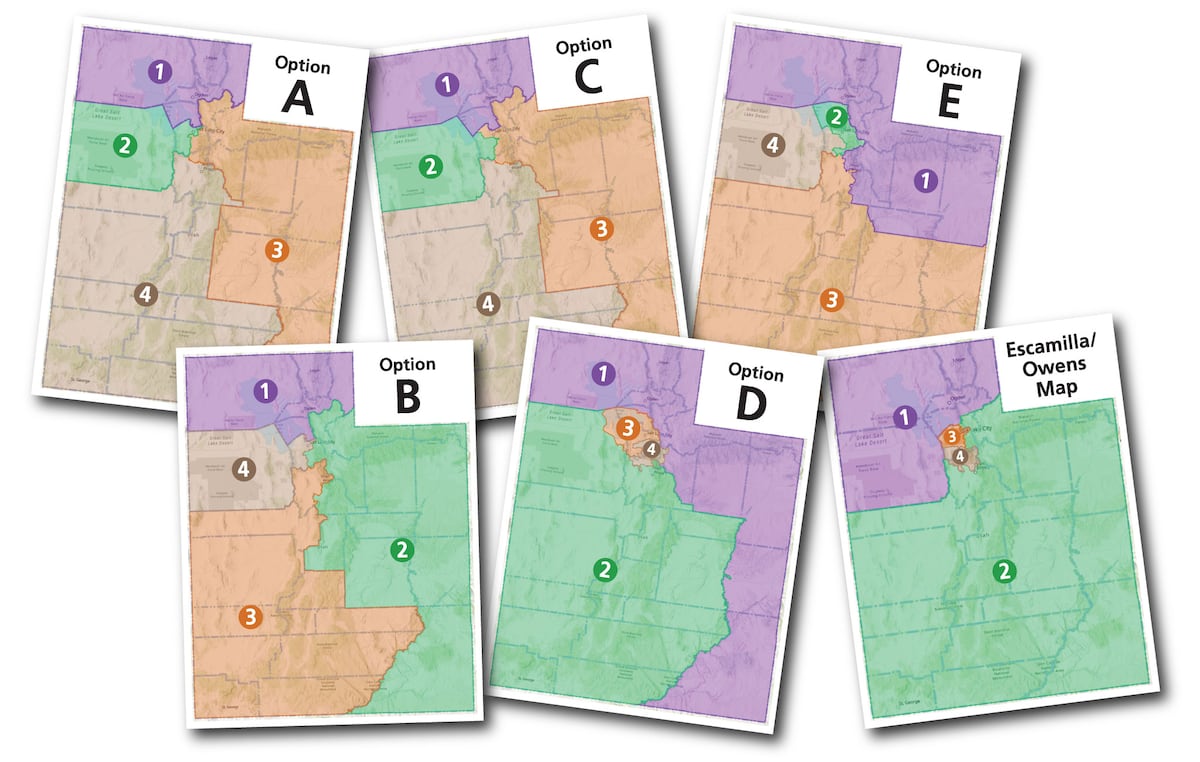Step 1: If you want to see all of the maps submitted — both by the legislators and the public — you can visit this link: https://citygate.utleg.gov/legdistricting/utah/comment_links. Then, click on …

As a deadline looms for the Legislature to meet a court-imposed deadline to draw new congressional maps, Utah residents have 10 days to weigh in on what those boundaries will look like — with some limitations.
The committee will meet Oct. 6 to recommend one map to the full Legislature, which is expected to adopt the final version during a special session that same day. It will then be submitted to 3rd District Judge Dianna Gibson, who last month tossed out the existing four-seat boundaries because they did not comply with the 2018 citizen-passed Proposition 4 — best known as the Better Boundaries initiative.
The Legislature essentially repealed the initiative, but last year, the Utah Supreme Court ruled in doing so, lawmakers violated citizens’ constitutional right to enact government reform through the initiative process.
Republican lawmakers are complying with the court’s directive to redraw maps “under protest,” according to Sen. Scott Sandall, R-Tremonton, the co-chair of the Legislative Redistricting Committee.
How to comment
Step 1: If you want to see all of the maps submitted — both by the legislators and the public — you can visit this link: https://citygate.utleg.gov/legdistricting/utah/comment_links. Then, click on the “Congress” tab to bring up the full list of maps.
But only the six maps drawn by the Legislative Redistricting Committee will be considered by lawmakers.
To view the five maps drawn for the Legislature by an expert hired by the redistricting committee, visit this link: https://le.utah.gov/interim/2025/pdf/00003649.pdf
And the map drawn by the two Democrats on the ten-person committee is here: https://le.utah.gov/interim/2025/pdf/00003659.pdf
Above each map is a link to the comment page.
Step 2: Do your homework. You can zoom in to see street-level details or put in your address to see how the map would impact you and your neighbors.
Step 3: Click “Add Comment” in the upper right.
Once you do that, there will be a box that says “Click on Map.” This will let you drop a pin on a spot of the map if you want to flag a specific area that is the focus of your comment — for example, if you think a city should be moved from one district to another.
Step 4: Once you drop your pin, a window will pop up asking you to categorize your comment as “Dislike,” “Like” or “Opinion.” Once you type in your full name, address, email and phone number, you’ll then be able to type your comment in the box below. After you write your comment, click “Add Comment,” and it will be posted.
Best to pick a favorite
First, the committee will not consider comments that focus on partisan data or viewpoints. Proposition 4 prohibits the committee from considering partisanship when making a map and Sandall has asked legislative staff to screen comments and only share those that are non-partisan in nature with committee members.
Sandall indicated the committee probably will not choose from maps submitted by the public because the maps cannot rely on partisan data. Because of the compressed timeline, he said, it would be “almost impossible” to ensure publicly submitted maps weren’t built using partisan data.
“We would have to go in and depose any or all of the map drawers to find out if political data was used, and we just don’t have that time,” Sandall said.
In reality, the law only prohibits the Legislature and the independent redistricting commission that was created under Proposition 4 from using things like voting records and election results when choosing maps.
Second, there isn’t much point in recommending specific changes to any map. Sandall said that, under the committee’s interpretation of the court’s scheduling order, new maps can’t be considered after Sept. 25 without triggering a new 10-day public comment period — and changes to existing maps would do the same. That would make it impossible for the Legislature to meet its Oct. 6 deadline.
“The Legislature cannot adopt a map that is not publicly available for comment starting … Sept. 25,” Rep. Candice Pierucci, R-Herriman, the committee’s co-chair, said Wednesday. “So when we meet back in a special session, it will be one of these maps that were publicly available to meet the 10-day window that was outlined by Judge Gibson in her timeline and order.”
So, given the constraints placed on the process, comments are best aimed at expressing a preference for an existing map — and likely one of those proposed by the Legislature — rather than suggesting specific changes or submitting a new map.
Source: Utah News
